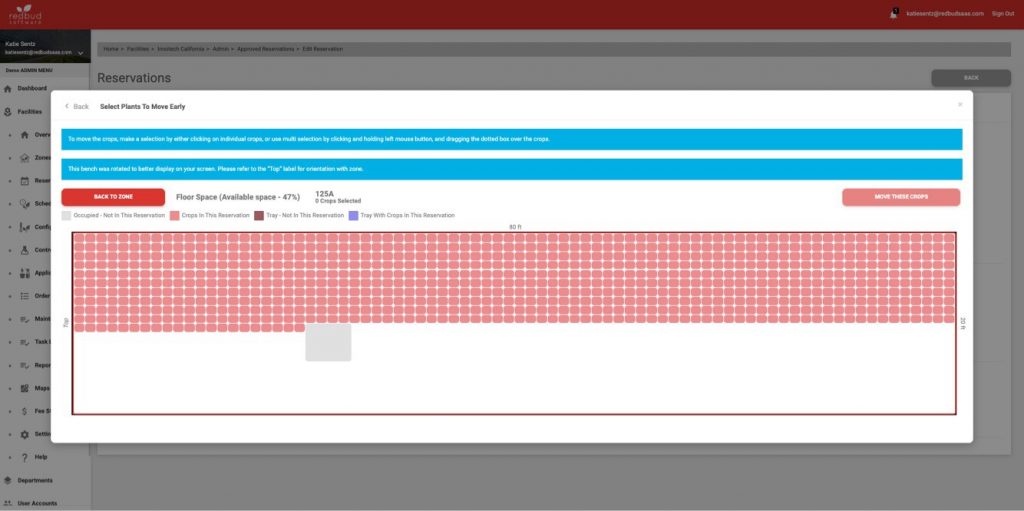
Features
Business
Management
Gain insight into how you use your space
February 11, 2020 By Bob Wiggins
 An example of a greenhouse zone map. Source: RedBud Software
An example of a greenhouse zone map. Source: RedBud Software Managing scarce space in a large greenhouse operation can be a daunting task. It’s like a puzzle the grower has to manage—starting with the basic fact that plants get larger as they grow and may require different environmental conditions at various times.
Critical tasks can be associated with different stages of the plant’s development and have to be tracked. Ideally, the grower will have a usable permanent record of where a plant has been in in the greenhouse and what has happened to it throughout its journey, so they can evaluate what’s working and what isn’t.
Space is expensive too. It’s important for the grower to be able to see how much space is being used and how much is still available, not just today, but at any given point in the future to aid in planning.
Many growers attempt to manage this very complicated issue with spreadsheets. If the operation is growing only one crop at a time and the cycle is fairly straightforward, spreadsheets can be one way of tracking space.
Spreadsheets have a number of drawbacks though. A spreadsheet is often not available to everyone who may need access to the information, and spreadsheets typically do not display information in the most useful way for visualizing space.
To get more in-depth analysis from the information, the grower has to be a “spreadsheet jock”, and this isn’t a skillset that every grower possesses. Recording data on a spreadsheet also represents precious time spent in the office being a “bookkeeper” instead of being out with the plants. Spreadsheets like this can also become ponderous over time, and when the staff member managing the spreadsheet leaves the business or retires, a lot of business-critical information usually leaves as well.
Modern software can make space management a lot easier, and can provide a lot more useful information. A good software system should provide visibility to everyone in the organization who needs it, both of the current space occupied, any available space and planned space utilization at any point in the future.
Modern software will also provide the grower with the ability to create templates based on the growth cycles of each crop in the greenhouse. Plants don’t always grow the way you expect. Even in a greenhouse, results can differ between seasons of the year, based on outside temperatures, light levels and other factors. A good software system will allow the grower to plan for these types of differences and make changes on the fly.
A well-designed software system should provide visibility not just of space usage at a macro level, but also down to the bench and individual plant level. Ideally, the system will include a mobile app with phone-based QR codes for plant tracking, so plants can easily be identified in the software and manual record-keeping can be kept to a minimum.
A thoughtful software system not only tracks space availability, but can also provide a visual head’s up of potential problems in the greenhouse. This could include pest and disease issues, which can be highlighted on a heat map. Numbers and reports don’t always draw attention to the biggest problems.
Modern software can also track inputs and conditions that affect each plant, based on the various zones that have housed the plant throughout its time in the greenhouse. In order for the grower to start using data for tracking trends, the information must be accumulated, searchable and easy to analyze. Tracking the various inputs that affect each plant—including temperature, humidity, light, soil conditions, pest and disease issues and much more—can provide extremely useful information over time that can help improve production and quality.
Bob Wiggins is CEO of RedBud SoftWare, Inc., www.redbudsaas.com.
Print this page